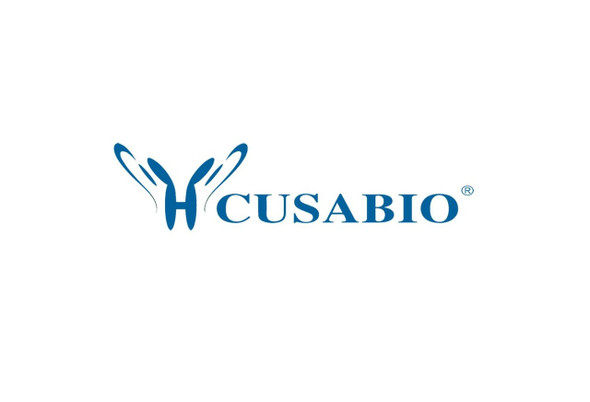Cusabio Human Recombinants
Recombinant Human Zinc finger protein GLI1 (GLI1), partial | CSB-EP009499HU1
- SKU:
- CSB-EP009499HU1
- Availability:
- 13 - 23 Working Days
Description
Recombinant Human Zinc finger protein GLI1 (GLI1), partial | CSB-EP009499HU1 | Cusabio
Alternative Name(s): Zinc finger protein GLI1(Glioma-associated oncogene)(Oncogene GLI)
Gene Names: GLI1
Research Areas: Developmental Biology
Organism: Homo sapiens (Human)
AA Sequence: SPNSTGIQDPLLGMLDGREDLEREEKREPESVYETDCRWDGCSQEFDSQEQLVHHINSEHIHGERKEFVCHWGGCSRELRPFKAQYMLVVHMRRHTGEKPHKCTFEGCRKSYSRLENLKTHLRSHTGEKPYMCEHEGCSKAFSNASDRAKHQNRTHSNEKPYVCKLPGCTKRYTDPSSLRKHVKTVHGPDAHVTKRHRGD
Source: E.coli
Tag Info: N-terminal 6xHis-tagged and C-terminal 6xHis-tagged
Expression Region: 201-400aa
Sequence Info: Partial
MW: 28.3 kDa
Purity: Greater than 85% as determined by SDS-PAGE.
Relevance: Acts as a transcriptional activator (PubMed:19706761, PubMed:10806483, PubMed:19878745, PubMed:24311597, PubMed:24217340). Binds to the DNA consensus sequence 5'-GACCACCCA-3' (PubMed:2105456, PubMed:8378770, PubMed:24217340). Regulates the transcription of specific genes during normal development (PubMed:19706761). Plays a role in craniofacial development and digital development, as well as development of the central nervous system and gastrointestinal tract. Mediates SHH signaling (PubMed:19706761, PubMed:28973407). Plays a role in cell proliferation and differentiation via its role in SHH signaling (PubMed:11238441, PubMed:28973407).; [Isoform 2]: Acts as a transcriptional activator, but activates a different set of genes than isoform 1. Activates expression of CD24, unlike isoform 1. Mediates SHH signaling. Promotes cancer cell migration.
Reference: Polymorphic variants of the human oncogene GLI1 function similarly.Yoon J.W., Kent P., Clark A., Patterson J., Villavicencio E., Iannaccone P., Walterhouse D.A novel splice variant of GLI1 that promotes glioblastoma cell migration and invasion.Lo H.W., Zhu H., Cao X., Aldrich A., Ali-Osman F.Cancer Res. 69:6790-6798(2009)
Storage: The shelf life is related to many factors, storage state, buffer ingredients, storage temperature and the stability of the protein itself. Generally, the shelf life of liquid form is 6 months at -20?/-80?. The shelf life of lyophilized form is 12 months at -20?/-80?.
Notes: Repeated freezing and thawing is not recommended. Store working aliquots at 4? for up to one week.
Function:
Involvement in disease:
Subcellular Location:
Protein Families:
Tissue Specificity:
Paythway:
Form: Liquid or Lyophilized powder
Buffer: If the delivery form is liquid, the default storage buffer is Tris/PBS-based buffer, 5%-50% glycerol. If the delivery form is lyophilized powder, the buffer before lyophilization is Tris/PBS-based buffer, 6% Trehalose, pH 8.0.
Reconstitution: We recommend that this vial be briefly centrifuged prior to opening to bring the contents to the bottom. Please reconstitute protein in deionized sterile water to a concentration of 0.1-1.0 mg/mL.We recommend to add 5-50% of glycerol (final concentration) and aliquot for long-term storage at -20?/-80?. Our default final concentration of glycerol is 50%. Customers could use it as reference.
Uniprot ID: P08151
HGNC Database Link: N/A
UniGene Database Link: N/A
KEGG Database Link: N/A
STRING Database Link: N/A
OMIM Database Link: N/A






